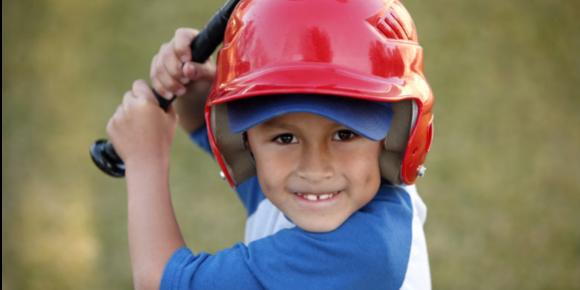4 tips for batting number 4

- posted: Dec. 08, 2015
Batting clean-up is perhaps the most important position in a baseball line-up. The success or failure of that player on each side usually defines whether that outing will be a slugfest offensive battle or a defensive pitching duel. The traditional calculation is simple; put someone with power at number 4 because the hope is to get at least two players on base with fewer than two outs when the deep-ball threat is up to bat. That way a sacrifice fly is the worst outcome and the best is a grand slam, if he can make contact with the ball cleanly. It’s that last part that makes the calculation an imperfect one. If you want to bat number 4 for a team under the care of a sports vision eye doctor you’ll need to have these 4 skills naturally or work with the training staff to improve them:
- Visual Acuity better than 20/15. The average professional baseball player can achieve 20/12 vision (some with correction). Acuity is the ability to see fine detail in one’s central vision. If a contact lens, pro-level sport lens, or other device (or procedure) can provide 20/10 visual acuity (this is tested for at your routine eye exam at sports vision practices), then the athlete should use this technological advantage to hit the same way one might use a batting glove or specific cleated shoe. See our other blog posts defining 20/15 and better vision.
- Rapid visual processing. Sports Vision Training with a tachistoscope, multiple object tracking, and even ocular nutrition can improve the speed of the synapses between the eyes and brain. Through training reps, this learned skill can improve the same way one can learn to speed-read. Processing a letter at a time is not as efficient as a word which is not as efficient as a phrase which is child’s play compared to processing the detail of a sentence or paragraph at a glance. Bat-speed latency has been shown to improve by 10% and you can notice more details at once like rotation of the ball, position of the pitcher’s follow-through, and other “tells” that careful study can reveal which pitch might be on its way. This all leads to reading the play faster.
- Quick reaction time. Bat speed is a measurable physical attribute like vertical leap, 20 yard dash, or pitching speed, but unlike the pitcher a batter must react to a visual stimulus to start the action of hitting. If you are the fastest runner in the world, you’ll still lose the 20 yard dash if you don’t pull the trigger on that talent the moment the starter gun goes off. Once you’ve mastered rapidly processing the visual information and made the decision to swing you need to be able to do so quickly. That’s why offices like 4Sight iCare train with reaction time because the first synapse is eye to visual cortex, the second is the decision to swing, and the last is from the motor cortex to the muscles to execute the swing. The transfer of visual information to physical motion is important in any sport, and is something that can be improved with Sports Vision Training. This training can also improve hand-eye coordination.
- Attention and concentration of a professional. If you’ve seen Bad News Bears, The Sandlot, Major League or any other iconic baseball movie you’ve heard the line: “hey batter, batter, batter…” This attempt to distract the batter as if waiving a baton behind the backboard of a free-throw is the extreme example of a time when loss of attention and/or concentration is possible. Multiple object tracking with Neurotracker is known to improve attention for patients with Attention Deficit Disorders and Traumatic Brain Injury. It can enhance the laser focus needed to perform at the highest level when the pressure is on. Training is preparing for the game-time situations when the difference between winning and losing is so close that a competitive edge is gained through the extra effort. The eye and brain training achieved through Sports Vision Training will improve mental stamina in the same way that improved conditioning during the off-season will come in handy in a 15-inning bout that comes down to the last play of the game.
If you’re batting number 4 in your line-up, the game may rest on your shoulders. Are you up to the task physically, mentally, and visually? Check out our services for Sports Vision Training, Maximum Vision Potential via MPOD measurements, and precise daytime and nighttime refractions for your best vision on our Sports Vision Training page. Improved performance may be just an eye exam away, but you’ll never know if you don’t know your metrics. To receive a FREE screening measurement of your sports vision (contrast sensitivity, static vs. dynamic acuity, visual processing speed, eye alignment and teaming, and concentration/attention) call 815-915-4047, and schedule Dr. Burke to come to your practice/training facility and provide this service for your team.
Hours of Operation
Closed
12:00 pm - 8:00 pm
10:00 am - 6:00 pm
10:00 am - 6:00 pm
10:00 am - 6:00 pm
9:00 am - 2:00 pm
Closed

